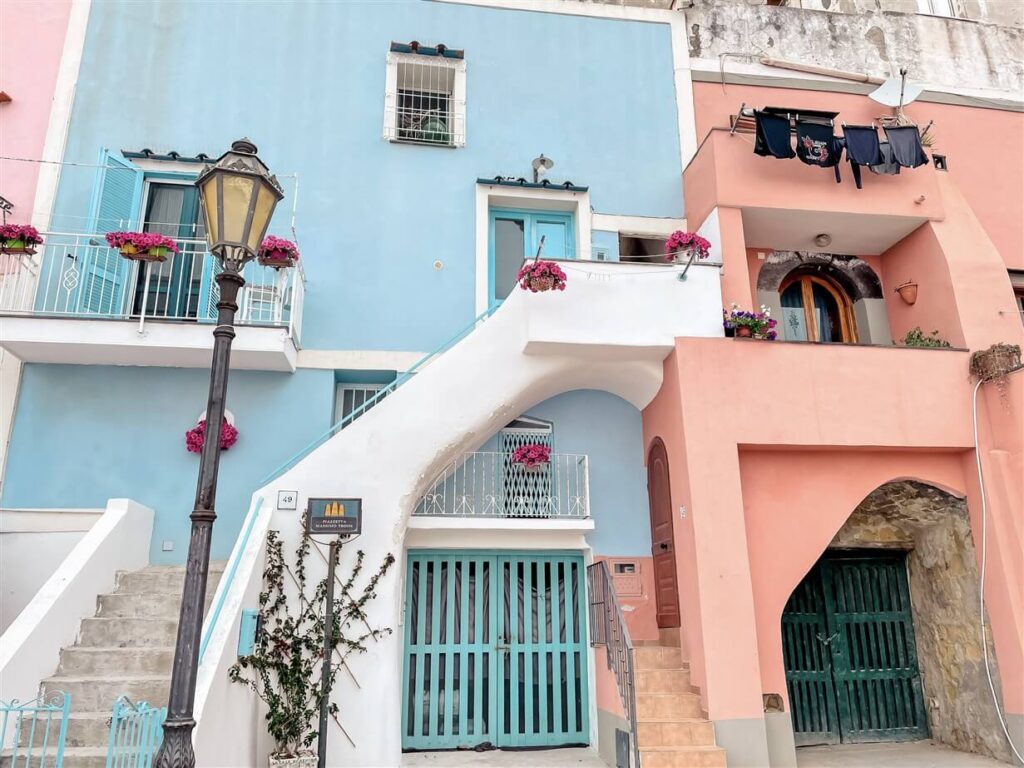
The islands of the Gulf of Naples have always been one of the most popular Italian destinations for travellers from all over the world. Ischia, Capri and Procida, in strict order of size, have been capturing the attention of visitors for decades and have managed to retain their unquestionable charm.
The three islands of the Gulf of Naples make the panorama of the Neapolitan capital one of the most beautiful in the world. Each island has its own characteristics and its own target audience. Capri, the blue island, is the favourite destination of the international jet set; Ischia, the green island, is loved by those in search of wellness spas; Procida, finally, offers postcard views and, being the smallest, is sought after above all by those who love to relax.
Islands of the Gulf of Naples: visiting Ischia, Capri and Procida
Ischia
Ischia is known as the green island because of its high concentration of vegetation. It is the largest in size and has six municipalities: Ischia, Casamicciola Terme, Lacco Ameno, Forio, Serrara Fontana and Barano d’Ischia. The municipality of Ischia is certainly the largest and is divided into the two areas of Ischia Porto and Ischia Ponte. The former is a small fishing village that is also quite crowded as it is the main landing point for ferries and hydrofoils, while the latter is the true historic centre, characterised by narrow alleys and ancient craft shops. At the very tip of Ischia Ponte is the Aragonese Castle, built in its original version by Gerone, tyrant of Syracuse, in 474 BC.
Ischia’s true speciality, however, is the fact that it is a superlative thermal destination. It is considered by some to be the largest thermal resort in the world. This definition is determined by the fact that, thanks to its volcanic origin, it has multiple natural thermal springs, around which hotels, such as the marvellous Regina Isabella in Lacco Ameno, and wellness centres have sprung up.
Capri
Capri is universally known as the blue island for the turquoise colour of its waters, but also as the island of love, as a super romantic destination. The island of Capri has always been a favourite destination for the stars of the international jet set. In fact, many have their own villa on the island or choose it as their holiday destination. Apart from this glossy face, there are numerous scenic attractions that characterise the island, starting with the famous Faraglioni.
The Faraglioni of Capri are rocky outcrops emerging from the sea. Not everyone knows that there are three Faraglioni, each with its own name, and the highest one reaches a height of no less than 109 metres. Crossing them by boat is an experience you will never forget. If you have never visited Capri, I recommend you discover it on a boat trip.
Among the island’s high points of interest are: the famous Piazzetta, Via Camerelle known as the luxury shopping street, Punta Tragara that offers unique photographic views, the Gardens of Augustus, built in the 1930s, with a panorama that sweeps from the Faraglioni to the Bay of Marina Piccola, and the famous Via Krupp. It is precisely Via Krupp, with its hairpin bends so narrow that they seem to overlap, that has been listed as one of the most spectacular streets in the world.
If you are looking for a less crowded and more authentic area, move to Anacapri, the second largest town on the island. Here you can reach the famous Grotta Azzurra by land and admire a breathtaking sunset from the Punta Carena lighthouse.
Islands of the Gulf of Naples: Procida
Procida is the smallest of the islands in the Gulf of Naples and, perhaps, also the most picturesque with the thousands of colourful houses of Corricella. Marina Corricella is the island’s oldest village, immortalised in thousands of photographs from above the road leading to the Abbey of San Michele Arcangelo on the promontory of Terra Murata. Famous beaches not to be missed include Pozzo Vecchio beach, seen in some scenes from ‘Il Postino’, and Chiaiolella beach, the busiest on the island.
From a geological point of view, Procida is of volcanic origin and is said to have originated from the eruptions of at least four different volcanoes, now completely extinct, dating back more than 40,000 years. It also includes the islet of Vivara, now a protected reserve, to which it is connected by a small bridge.



















